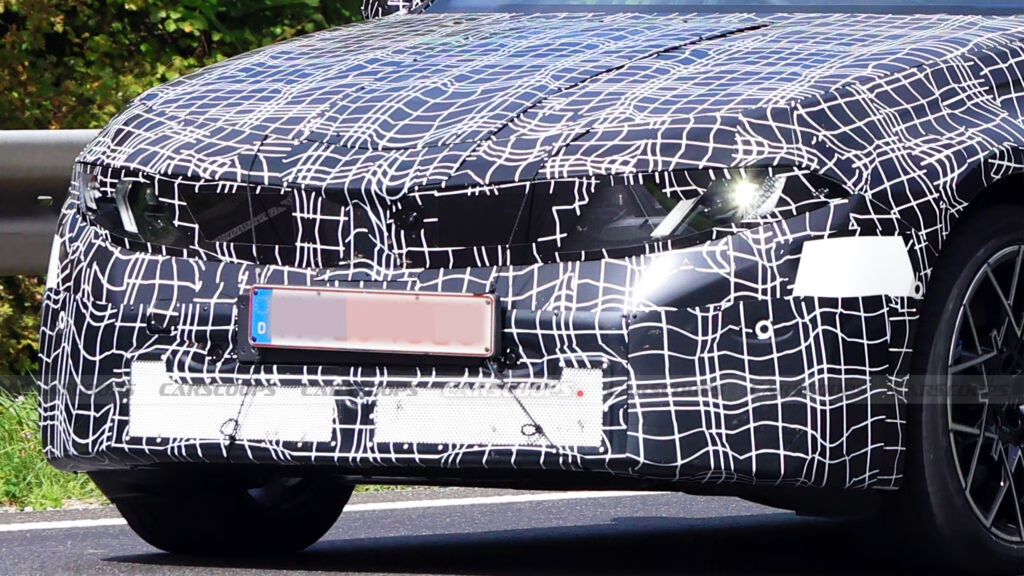How is BMW’s Next-Gen 3-Series Redefining Its Iconic Look?
Take a glance at the latest BMW prototypes rolling around Munich, and you’ll spot something different right away. Gone are the oversized kidney grilles that sparked so much debate in recent years. Instead, BMW’s upcoming 3-Series and all-electric i3 are embracing a sleeker, more refined front end—one that closely mirrors the Vision Neue Klasse concept. The result? Pure magic. The new face is sharper, with slimmed-down grilles and edgy LED headlights that flow seamlessly into the bodywork. It’s a nod to BMW’s heritage, but with a distinctly modern twist.
For anyone who’s followed the evolution of the 3-Series, this shift feels like a breath of fresh air. The current design language, while bold, divided opinion. Now, BMW seems to be listening to both critics and loyalists, dialing back the drama in favor of elegance and proportion. The new LED lights aren’t just a cosmetic update—they’re part of a broader move toward a unified, futuristic look across the Neue Klasse lineup. Expect to see these lighting signatures pop up on other models soon.
What’s Changing Beyond the Front End?
It’s not just the nose that’s getting a makeover. Every exterior panel on the next-gen 3-Series is set for a revamp. The doors and rear quarter panels, for example, borrow cues from the latest 5-Series, giving the car a more athletic, planted stance. Even the taillights are getting a rethink, with a design that’s neatly integrated into the rear—though the prototypes spotted so far may not be sporting the final production units.
This isn’t just about aesthetics. BMW’s design team is clearly aiming for a more cohesive, premium feel throughout the vehicle. The proportions look spot-on, and the overall silhouette is both familiar and forward-looking. For drivers who value both tradition and innovation, this update strikes a sweet spot.
Will the Electric i3 and Gas-Powered 3-Series Feel Like the Same Car?
Here’s where things get really interesting. While both the new 3-Series and i3 will share plenty of visual DNA, under the skin they’re quite different. The all-electric i3 will ride on BMW’s Neue Klasse platform—the same architecture underpinning the upcoming iX3 SUV. This means a ground-up EV experience, with all the benefits of a dedicated electric chassis: better packaging, lower center of gravity, and likely improved driving dynamics.
Meanwhile, the combustion-powered 3-Series will stick with BMW’s proven CLAR platform. That’s not a bad thing—CLAR has underpinned some of the brand’s best recent models—but it does mean the two cars will offer distinct driving experiences. For buyers, this dual-architecture approach offers real choice: stick with the familiar feel of a gas engine, or jump into the future with a purpose-built EV.
What Powertrains Can Buyers Expect?
BMW isn’t leaving enthusiasts behind. The next 3-Series will offer a range of engines, including 2.0-liter four-cylinders and 3.0-liter inline-sixes, depending on the market. The M3, always a fan favorite, will evolve as well—expect a version of the current 3.0-liter twin-turbo six, this time paired with a mild-hybrid system for extra punch and efficiency.
On the electric side, details are still under wraps, but if the Neue Klasse platform’s capabilities are any indication, the i3 should deliver both strong performance and solid range. Recent industry reports suggest BMW is targeting over 300 miles on a charge for its next-gen EVs, thanks to advances in battery tech and efficiency. That’s a game-changer for anyone worried about range anxiety.
When Will the New Models Hit the Road?
BMW hasn’t circled a date on the calendar just yet, but all signs point to a reveal next year, with the cars arriving as 2027 models. Until then, camouflaged prototypes will keep making the rounds in Germany, teasing what’s to come. If the buzz from industry insiders is any indication, anticipation is running high—not just among BMW loyalists, but across the luxury compact segment.
How Does This Fit Into BMW’s Bigger Strategy?
The Neue Klasse design language isn’t just a facelift—it’s a signal of where BMW is headed. By blending classic cues with cutting-edge tech, the brand is positioning itself for a new era of electrification and digitalization. The move to smaller grilles and advanced lighting isn’t just about looks; it’s about aerodynamics, efficiency, and a unified brand identity.
BMW’s decision to offer both combustion and electric versions of its core models reflects a pragmatic approach. The global market isn’t moving at the same pace toward electrification, so giving buyers options keeps the 3-Series relevant everywhere from Munich to Miami.
What’s the Real-World Impact for Drivers?
For everyday drivers, these changes mean more than just a pretty face. Expect improved efficiency, smarter tech, and a driving experience that stays true to BMW’s roots—responsive, engaging, and just a little bit addictive. The shift to the Neue Klasse platform for EVs should bring tangible benefits in cabin space and ride quality, while the updated CLAR platform keeps the gas-powered models sharp and familiar.
The big takeaway? BMW’s next 3-Series and i3 aren’t about perfection—they’re about smarter adjustments. Start with one change this week, and you’ll likely spot the difference by month’s end. Whether you’re eyeing a new car or just curious about where the brand is headed, it’s clear BMW is betting on evolution, not revolution—and that’s a move worth watching.

